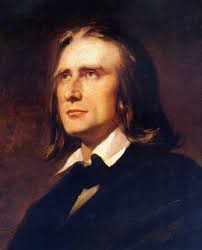The History of Deux Légendes by Franz Liszt
Franz Liszt, one of the most visionary composers of the 19th century, is often celebrated for his dazzling piano works and his role in the development of the symphonic poem. Yet among his most spiritually profound creations lies a lesser-known gem: Deux légendes, a pair of deeply evocative pieces for solo piano that reflect his religious devotion and narrative imagination.
Origins and Background
Composed in the mid-1860s, Deux légendes consists of two separate works:
- St. François d’Assise: La prédication aux oiseaux (St. Francis of Assisi: The Sermon to the Birds)
- St. François de Paule marchant sur les flots (St. Francis of Paola Walking on the Waves)
These pieces were completed during Liszt’s final creative period, often referred to as his “late style,” characterized by harmonic innovation, spiritual introspection, and a departure from purely virtuosic writing. By the time he wrote Deux légendes, Liszt had taken minor orders in the Catholic Church and adopted the title “Abbé Liszt.” His music from this time reflects a profound engagement with religious themes and mysticism.
1. St. Francis of Assisi: The Sermon to the Birds
The first piece in the set is inspired by the life of St. Francis of Assisi, the patron saint of animals and nature. According to legend, St. Francis preached a sermon to a flock of birds, who listened quietly and attentively. Liszt paints this moment with delicate and shimmering textures, imitating birdsong with intricate trills and fluttering figures in the upper register of the piano.
Despite its gentle and poetic atmosphere, the piece is technically demanding, requiring the pianist to render the illusion of multiple layers—nature, speech, and reverence—within a seamless narrative arc. It is both a pastoral scene and a spiritual meditation, typical of Liszt’s fusion of programmatic and devotional content.
2. St. Francis of Paola Walking on the Waves
The second piece is based on another remarkable saint, St. Francis of Paola, a 15th-century hermit and founder of the Order of Minims. One famous episode from his life tells of how he miraculously crossed the Strait of Messina by walking on the water after being denied passage by a boatman.
In contrast to the lyrical quality of the first legend, this piece is more dramatic and turbulent. Liszt employs sweeping arpeggios, bold harmonies, and rhythmic drive to evoke the image of the sea and the miracle of faith overcoming nature. The climax is both grand and triumphant, symbolizing the spiritual strength and divine grace attributed to the saint.
Musical and Historical Significance
Deux légendes marks a turning point in Liszt’s compositional approach. Rather than showcasing his earlier flamboyant virtuosity, these works delve into symbolic storytelling and spiritual contemplation. They also demonstrate Liszt’s innovative use of harmony and color—elements that would later influence composers like Debussy, Ravel, and Messiaen.
The pieces also represent an important step in the evolution of programmatic music. Unlike earlier works that often emphasized dramatic spectacle, Liszt here merges narrative and musical expression in a subtle, introspective manner. They are as much meditations as they are tone poems.
Reception and Legacy
Though not as widely performed as some of Liszt’s more famous works, Deux légendes has earned admiration among pianists and scholars for its depth, originality, and expressive power. Modern performers often see the set as a reflection of Liszt’s inner world—a deeply spiritual man grappling with faith, mortality, and the divine through music.
Today, Deux légendes stands as a testament to Liszt’s spiritual journey and his enduring legacy as a pioneer of expressive, narrative, and imaginative piano writing.
Conclusion
Deux légendes is a powerful example of Franz Liszt’s late style, in which music becomes a form of spiritual testimony. Through these two contrasting legends—one serene and lyrical, the other forceful and miraculous—Liszt transforms tales of faith into profound musical experiences. For listeners and performers alike, they offer a glimpse into the sacred world that inspired one of history’s most extraordinary musical minds.


Comments are closed